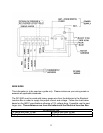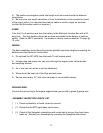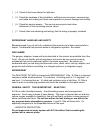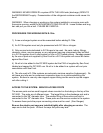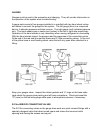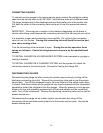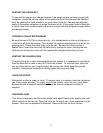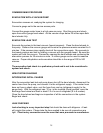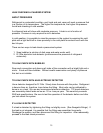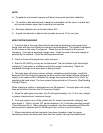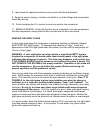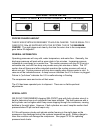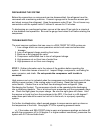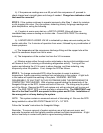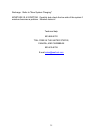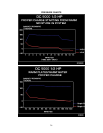29
LEAK CHECKING A CHARGED SYSTEM
ABOUT PRESSURES
Refrigerant in a saturated condition, part liquid and part vapor will exert a pressure that
is a function of its temperature. The higher the temperature, the higher the pressure.
Avoid leak checking in cold weather.
A refrigerant leak will show with moderate pressure. A leak is not a function of
pressure. Pressure is only required to aid in detection.
In cold weather, it is possible to raise the pressure in the system by warming the cold
plate with a light bulb left in close proximity to the cold plate for several hours with the
box lid open.
There are two ways to leak-check a pressurized system:
1. Soap bubbles (a solution of dish soap and water works well).
2. R-134a electronic leak detector (probe senses the presence of refrigerant
molecules).
TO LEAK CHECK WITH BUBBLES
Soap each connection and observe all sides of the connection with a bright light and a
mirror. A leak will blow bubbles. Without careful examination and plenty of pressure
this test is not reliable.
TO LEAK CHECK WITH AN ELECTRONIC DETECTOR
Use a detector designed for R-134a. Slowly trace the area with the probe. Refrigerant
is heavier than air, therefore, trace below the fitting. Most units can be calibrated to
home in on a leak. We use and recommend electronic detection. TIF brand detectors
can accurately detect leaks as low as 1/2 oz. loss per year. This sensitivity exceeds
SAE leak specifications. Be sure to test the operation of the detector before and after
you leak check the system
IF A LEAK IS DETECTED
If a leak is detected try tightening the fitting nut slightly more. (See Swagelok fittings). If
the leak is not stopped, it is possible that the fitting was assembled incorrectly.
Discharge the system, and then disconnect the fitting for inspection. After reassembly,
proceed to the leak check procedure.



